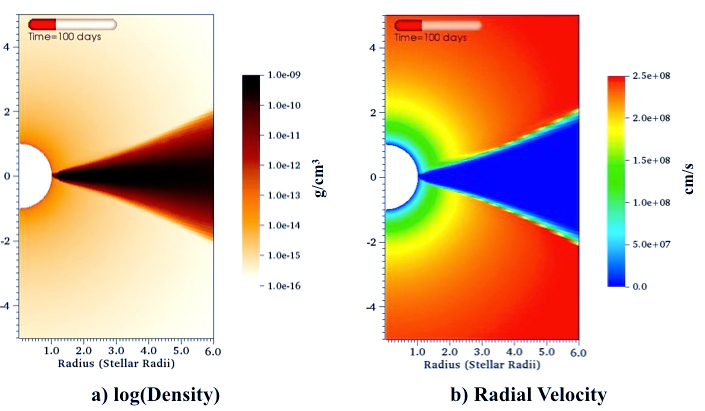| EPoS Contribution |
|
Near Star Radiative Feedback and the Stellar Upper Mass Limit
Nathaniel Kee IAAT, U Tuebingen, Tuebingen, DE | |
| Studies of the formation of high-mass stars must take into account the role of feedback from the forming star's extreme luminosity (103 - 106 Lsol) and mass loss rate (10-10 - 10-5) Msol/yr). However, these simulations generally track the infalling gas only to a distance of a few AU from the star. To be accreted, material must contend with these feedback processes all the way down to the stellar surface. In this region, the scattering of UV photons off the spectral lines of ionized metal species can generate accelerations tens of times stronger than local gravity, providing a difficult barrier for accretion to overcome. This talk presents the first simulations of such feedback on these final miles of accretion, and discusses its role in setting the upper mass limit of stars. | |
 | |
| Caption: A characteristic snapshot of the effects of near star radiative feedback in density (left) and radial velocity (right). | |
| Collaborators: R. Kuiper, IAAT, U Tuebingen, DE S. Owocki, U Delaware, US |
Key publication
Suggested Session: High-mass star/star cluster formation |

